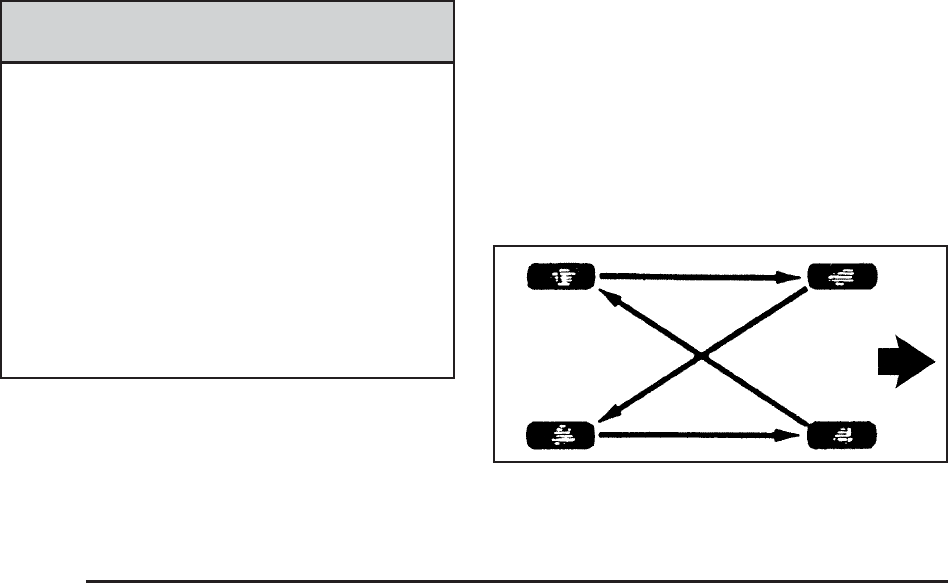
High Speed Operation (Red Line)
{CAUTION:
Driving at high speeds, 100 mph (160 km/h)
or higher, puts an additional strain on tires.
Sustained high-speed driving causes
excessive heat build up and can cause sudden
tire failure. You could have a crash and you or
others could be killed. Some high-speed rated
tires require inflation pressure adjustment for
high speed operation. When speed limits and
road conditions are such that a vehicle can
be driven at high speeds, make sure the tires
are rated for high speed operation, in excellent
condition, and set to the correct cold tire
inflation pressure for the vehicle load.
If your vehicle has 215/45ZR17 size tires, set the cold
tire inflation pressure to 33 psi (227 kPa) for the
front and rear tires when operating your vehicle under
high-speed conditions. When you end high-speed
driving, return the tires to the cold inflation pressure
shown on the tire and loading information label.
Tire Inspection and Rotation
Tires should be rotated every 5,000 to 8,000 miles
(8 000 to 13 000 km).
Any time you notice unusual wear, rotate your tires as
soon as possible and check wheel alignment. Also
check for damaged tires or wheels. See When It Is Time
for New Tires on page 5-68 and Wheel Replacement
on page 5-72 for more information.
The purpose of regular rotation is to achieve more
uniform wear for all tires on the vehicle. The first rotation
is the most important. See Scheduled Maintenance
on page 6-4.
When rotating non-directional tires, always use the
correct rotation pattern shown here.
Non-Directional Tires
5-66


















